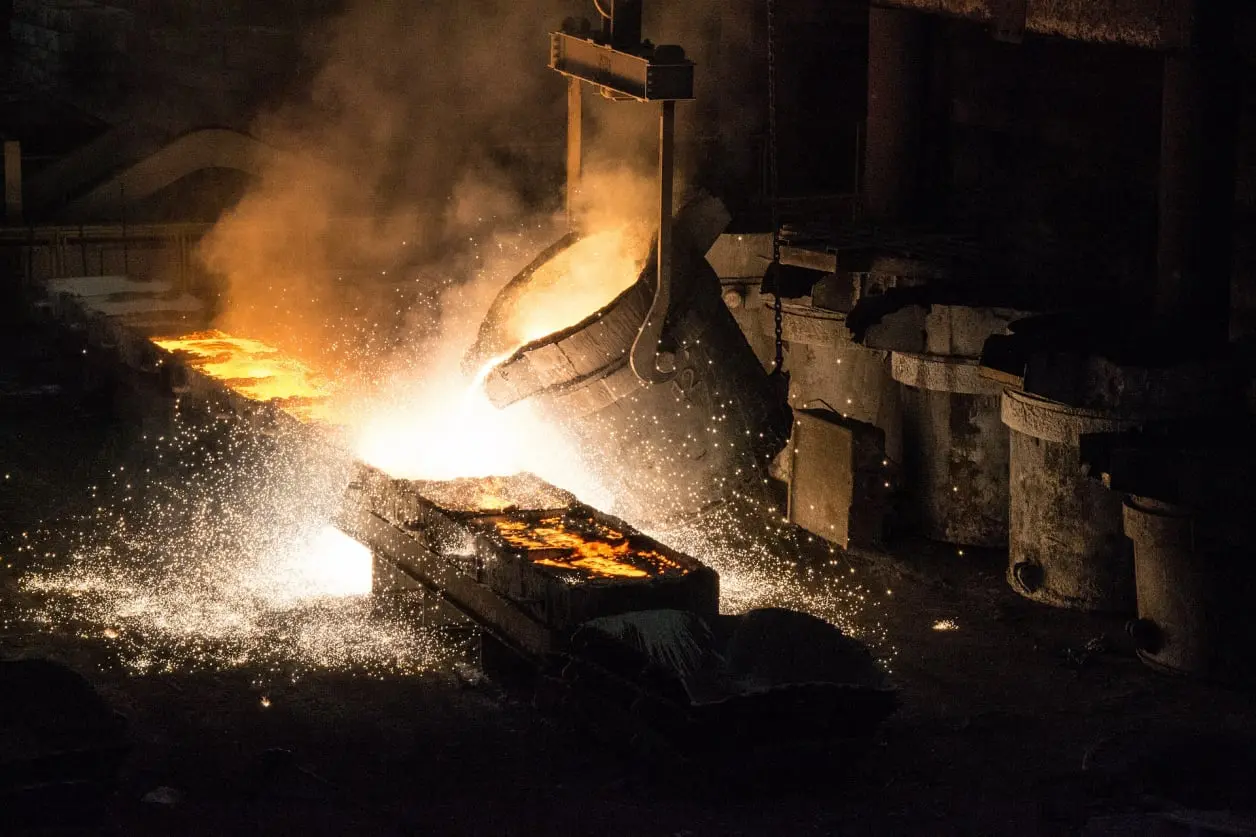
Energy Efficiency Transformation in Metallurgy:
A Case Study of Company X
Prepared and written by Šimon Staňo, CEO

Prepared and written by Šimon Staňo, CEO
The primary objective was to identify and rectify energy inefficiencies in the energy-intensive metallurgy processes, aiming for substantial cost savings and a reduced environmental impact.
Company X, a prominent player in the metallurgy sector, faced escalating energy costs and environmental pressures. In response, the company
initiated a targeted energy monitoring and optimization program to enhance efficiency and reduce operational expenses.
Implementation
Company X undertook a comprehensive approach to implement an advanced energy monitoring system tailored to the specifics of metallurgical operations.

Smart meters and sensors were strategically placed throughout the production line, focusing on energy-intensive stages such as smelting, refining, and casting. This high-resolution monitoring enabled precise identification of energy consumption patterns. With a real-time screening software, the managers were able to see the current situaition wherever and whenever on their devices and thus identify what was going on during the whole time and what were the weak spots that needed to be fixed.
Temperature Profiling in Smelting:
Traditional constant high-temperature smelting processes were replaced with dynamic temperature profiling. This adjustment, based on real-time demand and material characteristics, not only reduced energy consumption but also
improved the quality of the smelted metal.
Refining Time Adjustment:
Lengthy refining processes were optimized by identifying optimal refining times for different materials. This reduced refining durations, saving energy without compromising product quality.
By identifying peak energy demand periods, the company implemented load-shifting strategies. Non-critical operations were rescheduled to off-peak hours, capitalizing on lower electricity costs during those times.
Variable Speed Drives in Conveyor Systems:
Conventional conveyor systems were upgraded with variable speed drives, allowing adjustment based on production requirements. This resulted in significant energy savings during periods of lower production intensity.
Energy-Efficient Lighting and Ventilation:
Traditional lighting was replaced with energy-efficient LED systems, and smart ventilation controls were installed. Motion sensors ensured lights and ventilation operated only when and where needed, reducing overall energy usage
in non-production areas.
Equipment Upgrade for Heat Recovery:
Heat recovery systems were implemented to capture and reuse excess heat generated during certain metallurgical processes. This reduced the need for additional heating and lowered overall energy demand, which then also resulted in the post-process analysis also available thanks to the Smart Energy Management System.
After the first year of implementation, the Company X witnessed substantial improvements:
Through targeted process optimization, the company achieved a 19 % reduction in energy consumption during smelting and refining processes. This resulted in an annual cost saving of 45 000 €.
Shifting non-critical operations to off-peak hours reduced peak demand charges, contributing to a 12 % reduction in overall electricity costs. Annual savings from load shifting amounted to 28 000 €.
Upgrading inefficient equipment led to a 15 % increase in energy efficiency, reducing both energy consumption and maintenance costs. This translated to an annual savings of 36 000 €.
These initiatives resulted in a total annual cost saving of 109 000 € for the Company X.
Company X‘s success in implementing targeted energy monitoring and optimization strategies showcases the potential for substantial cost savings and enhanced sustainability within the energy-intensive metallurgy sector. The company's commitment to continuous improvement, process optimization, and strategic investments in technology positions it as a leader in energy-efficient metallurgical operations.